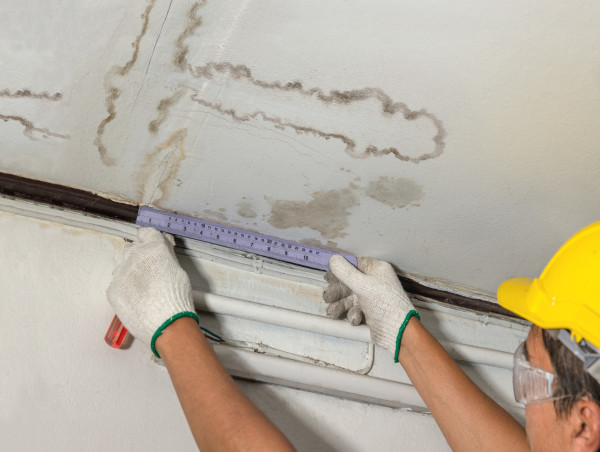Earl Carr, Jr., president of Gulf 52 in Hammond, Louisiana, emphasized the importance of early action. “Mold prevention begins the moment floodwaters stop rising. Every hour matters. The faster the drying process begins, the less likely mold becomes a long-term issue,” said Carr.
Gulf 52 specializes in post-storm remediation, flood recovery, and structural preservation across South Louisiana, a region regularly affected by hurricane activity and heavy seasonal storms.
Understanding the Conditions That Lead to Mold
Mold requires moisture, organic material, and limited airflow to thrive. These conditions are often present in flooded buildings or homes affected by roof or window leaks during a storm. In areas with high humidity, moisture can linger in walls, flooring, and insulation long after visible water has been removed.
Drywall, wood framing, carpet, upholstery, and paper-based materials act as feeding grounds for mold spores. Once established, mold colonies release additional spores into the air, compounding the risk of contamination in adjacent areas.
Initial Steps for Mold Prevention
Mold prevention begins with water removal and moisture control. This process should be initiated as soon as it is safe to access the property. The first 48 hours are critical.
1. Remove Standing Water Immediately
Use pumps, wet vacuums, or professional extraction services to clear all standing water from floors, basements, and crawlspaces.
2. Remove Water-Damaged Materials
Carpeting, insulation, upholstered furniture, drywall, and ceiling tiles that have been saturated should be removed. These materials retain moisture and encourage mold development if left in place.
3. Increase Ventilation
Open windows and doors to allow cross-ventilation. Use fans, dehumidifiers, and HVAC systems (if operational) to reduce indoor humidity. Air movement helps dry surfaces and prevent stagnant conditions where mold thrives.
Drying Out the Structure
Drying the property involves more than wiping surfaces. Water can penetrate deep into subfloors, wall cavities, and framing. Specialized drying equipment, such as commercial-grade air movers and dehumidifiers, may be required for thorough moisture removal.
Moisture meters can help track progress and ensure that wood and drywall components reach safe moisture levels before repairs begin. Rebuilding too soon—before materials are fully dry—can trap moisture and create an environment conducive to hidden mold growth.
Cleaning and Disinfection
After water and damaged materials have been removed, all exposed surfaces should be cleaned and disinfected to prevent mold spores from taking hold.
Use EPA-registered disinfectants that are effective against mold and mildew.
Focus on non-porous surfaces such as concrete, tile, metal, and plastic.
Scrub wood framing with detergent and water before applying a disinfectant.
Personal protective equipment, including gloves, goggles, and N95 masks, should be used during cleanup to limit exposure to airborne spores and contaminants.
Preventing Mold During Repairs
Before installing new insulation, drywall, or flooring, verify that all framing and substructures are completely dry. Installing materials over damp wood or concrete can conceal mold problems that emerge later.
Moisture barriers or mold-resistant products can be considered during reconstruction, especially in areas prone to flooding or water intrusion.
Regular inspections during and after repairs help identify any signs of recurring moisture, musty odors, or discoloration that may suggest mold activity.
Long-Term Mitigation Strategies
While immediate cleanup is critical, long-term mold prevention relies on property improvements that reduce the risk of future water intrusion:
Install sump pumps and check valves in basements.
Elevate HVAC units, electrical panels, and appliances in flood-prone areas.
Ensure gutters and downspouts direct water away from the foundation.
Repair roof leaks, window seals, and exterior cracks promptly.
Landscaping can also play a role in directing water flow. Proper grading and drainage reduce the chances of standing water near the building.
Monitoring and Maintenance
Even after initial remediation, mold can develop if moisture returns. Routine inspections—especially during high-humidity months—can help detect problems early.
Look for:
Musty or earthy odors in closed spaces
Surface discoloration, especially near plumbing
Condensation on windows or walls
Recurring allergies or respiratory issues in occupants
Moisture sensors and humidity monitors are useful tools for maintaining safe indoor conditions in areas with a history of water damage.
Morgan Thomas
Rhino Digital, LLC
+1 504-875-5036
email us here
Visit us on social media:
Facebook
Legal Disclaimer:
EIN Presswire provides this news content "as is" without warranty of any kind. We do not accept any responsibility or liability for the accuracy, content, images, videos, licenses, completeness, legality, or reliability of the information contained in this article. If you have any complaints or copyright issues related to this article, kindly contact the author above.
![]()



